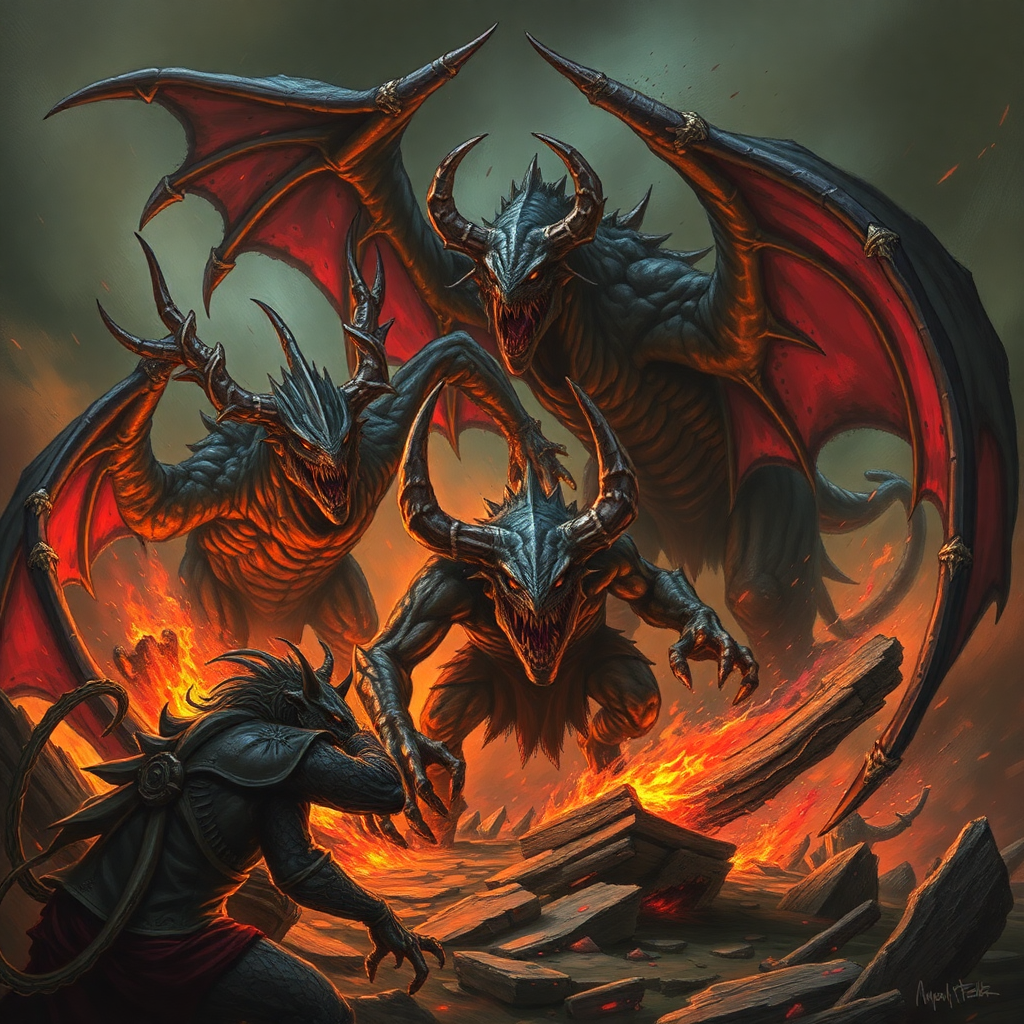What are the chaos monsters in the Bible?
Similar to Leviathan, Rahab symbolizes the chaotic elements that threaten to disrupt order and stability. In various ancient texts, including the Ugaritic myths, Rahab is depicted as a dragon or sea monster, reinforcing its association with chaos.
Throughout biblical literature, the concept of chaos is often personified by beings known as "chaos monsters." These creatures symbolize the disorder and chaos that oppose God's creation and sovereignty. While they may not be as widely recognized as other biblical figures, they carry deep theological significance, reflecting the struggle between order and chaos, creation and destruction, good and evil. Understanding these chaos monsters offers profound insights into biblical narrative and theology.
The Sea and Leviathan
One of the most notable chaos monsters in the Bible is Leviathan, a creature depicted in several passages, including Job 41, Psalm 74:14, and Isaiah 27:1. Leviathan is often portrayed as a formidable sea serpent or dragon, embodying the chaotic forces of the sea. In ancient Near Eastern cultures, the sea was seen as a symbol of chaos and unpredictability, and Leviathan represented the ultimate expression of that chaos. In Job, God's descriptions of Leviathan emphasize its untamable nature, serving as a reminder of God's power over even the most fearsome of creatures. The defeat of Leviathan implies God’s sovereignty and the establishment of order in the cosmos, reinforcing the belief that God is capable of overcoming chaos.

Rahab: The Sea Monster
Another chaos monster mentioned in the Bible is Rahab, which is often associated with the tumultuous waters of the sea. In Isaiah 51:9, Rahab is personified as a powerful adversary to God’s people, representing the forces of chaos and opposition. Similar to Leviathan, Rahab symbolizes the chaotic elements that threaten to disrupt order and stability. In various ancient texts, including the Ugaritic myths, Rahab is depicted as a dragon or sea monster, reinforcing its association with chaos. The biblical references to Rahab illustrate God's ultimate victory over chaos, as they often depict God as the one who subdues and overcomes these chaotic forces.
The Tiamat Connection
The chaos monsters in the Bible draw parallels with ancient Near Eastern mythology, particularly the Babylonian creation myth featuring Tiamat. Tiamat, a goddess of the ocean and chaos, gives birth to various monsters that pose a threat to the gods. The biblical imagery of chaos monsters serves a similar purpose: they represent the primordial chaos that God conquers during creation. This connection emphasizes the theological stance of the Israelites that their God is supreme over all forces of chaos and disorder, showcasing a clear distinction between Yahweh and other ancient deities.
Theological Implications
The presence of chaos monsters in the Bible invites readers to reflect on the broader themes of chaos versus order. These mythic figures embody the spiritual struggles present in the world, representing the tumultuous forces that often threaten to overwhelm creation. Nonetheless, the recurring motif of God’s triumph over chaos monsters serves to affirm the message of hope and divine sovereignty. Throughout scripture, believers are reassured that despite the chaos they may face in life, God is always in control and capable of restoring order.